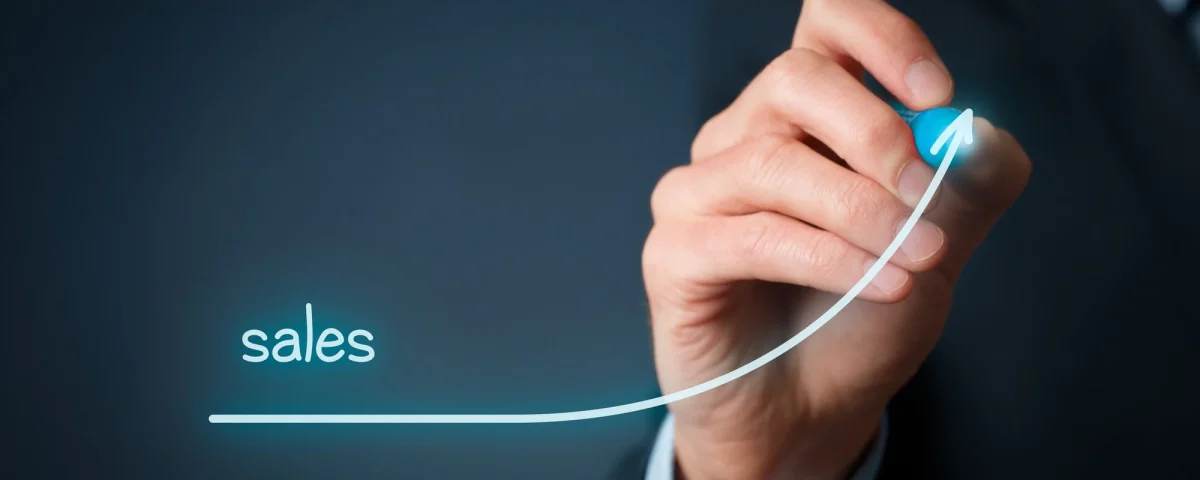
Why emotional intelligence is the secret weapon top salespeople use to maximize performance
11th October 2024
Best Sales Training Courses for Building Long-Term Client Relationships
22nd November 2024Kennedy Ross Sales & Management Training strongly believe that sales performance improvement isn’t a buzzword. In today’s market, where competition is constant and customers expect more every year, strong sales performance is non-negotiable. It keeps the lights on. It drives growth, profit, and credibility.
Ignore it and you fall behind. Competitors grab your share, clients lose trust, and rebuilding gets harder. Focus on it — with clear goals, smart metrics, and ongoing training — and the business doesn’t just survive. It grows.
Sales Performance Improvement: How Goal Setting and Metrics Drive Success
Think of goal setting and metrics like the steering wheel of a car. Without them, you’re moving, but not necessarily in the right direction. Training builds skill, yes, but it’s the combination of clear objectives and measurement that gives salespeople focus.
Scattershot selling wastes energy. When goals are specific and linked to the right numbers, effort becomes productive. You can see progress, spot weak points early, and keep momentum going. The point is not “any” goal. It’s the right goals, paired with meaningful data, that actually shift performance.
The Role of Goal Setting in Sales
Why goals matter
Sales without goals quickly becomes reactive. Teams chase whatever looks urgent, rather than what matters long term. Goals provide structure, purpose, and direction.
Motivation and alignment
A shared target unifies the team. People know what they’re working toward, confusion drops, and motivation rises. Success feels collective.
STRAM (Not SMART) goals
SMART goals have been around forever: Specific, Measurable, Achievable, Relevant, Time-bound. Useful, but a little dated. With Gen Z and Millennials making up more of the workforce, we use STRAM: Specific, Trackable, Agreed, and Motivating.
The “agreed” part changes the conversation. It means managers and reps set goals together, building collaboration instead of dictation. Motivation takes the place of measurability — because hitting numbers means nothing if the salesperson isn’t driven to get there.
Vague or unrealistic targets deflate people. STRAM keeps things sharp, realistic, and energising.
Types of Sales Goals: Short-Term vs Long-Term
Short-term goals deliver the immediate wins — revenue targets this month, quotas this quarter. Long-term goals focus on strategy — new markets, customer loyalty, positioning for future growth.
Both matter. Lean too hard on short-term and you burn out chasing quick deals. Focus only on long-term and you miss the cash flow needed to stay afloat. Balance is the key: stack quick victories while laying foundations for the future.
Defining Key Metrics for Sales Performance
What to track
Conversion rates. Customer acquisition cost. Average deal size. These numbers show productivity and profitability.
Numbers and behaviours
But, numbers alone don’t tell the story. Behaviour matters just as much. At Kennedy Ross, our programmes focus on building agreed behaviours alongside the metrics. Managers and reps decide upfront what actions should look like — then track whether they happen.
That way, data isn’t just about meetings or revenue. It also reflects how the skills from training are being used in practice.
Activity-Based Metrics vs Outcome-Based Metrics
Activity metrics measure input: calls made, emails sent, demos booked. They show effort.
Outcome metrics measure results: revenue closed, deal size, win rates. They show impact.
Neither is enough on its own. Track only activity, and you risk celebrating busyness without results. Track only outcomes, and you miss the early warning signs. Improvement comes from watching both together.
Tracking Sales Progress with Real-Time Data
Real-time data changes the game. It lets managers and reps see immediately when something shifts — a dip in call quality, a change in buyer behaviour, a new trend in lead sources.
Modern CRMs like Salesforce or HubSpot, or bespoke tools, make this possible. They also support consistent follow-up, which is often where sales are won or lost. Without those reminders and nudges, even good leads can slip away.
The Impact of Regular Reviews and Feedback
Feedback closes the loop. Without it, issues grow quietly until they explode. With it, small adjustments keep performance moving in the right direction.
Quarterly reviews are too slow. Monthly one-to-ones work better. At Kennedy Ross, we’ve introduced this approach to over 200 businesses. Done properly, these meetings aren’t punitive. They’re constructive, supportive, and focused on both numbers (“what”) and behaviours (“how”).
The balance matters. Praise where it’s due. Challenge where it’s needed. Always with the goal of growth, not fear.
Using Metrics to Refine and Adjust Strategies
Data reveals patterns. Spot a trend early and you can adapt before it becomes a crisis.
If performance dips, first check whether the agreed plan is being followed. If it isn’t, correct the execution. If it is and results still lag, then adjust the strategy. Sales is fluid. Sticking rigidly to a failing plan is worse than making the wrong call. Flexibility is a strength.
Encouraging Accountability and Ownership
Accountability isn’t about pressure. It’s about pride. When salespeople feel ownership of their targets, they work harder to hit them.
Managers can strengthen this by giving autonomy, recognising initiative, and involving reps in goal setting. Empowered people are proactive. Proactive teams drive results.
The Role of Sales Training in Performance Improvement
Training isn’t a one-and-done. Markets evolve, buyers evolve, and skills need refreshing.
Kennedy Ross Sales and Management Training Programmes provide structured, ongoing learning. They focus on both skills and behaviours, so salespeople can adapt, stay confident, and keep improving year after year.
Overcoming Common Barriers
Every team hits roadblocks: unclear goals, lack of resources, not enough coaching. Left unchecked, these stall progress.
The fix? Break big goals into smaller steps. Celebrate wins along the way. That rhythm keeps people engaged and stops fatigue from setting in.
Conclusion
Sales performance improvement isn’t about chasing more numbers. It’s about clarity, accountability, and constant refinement. Goals provide direction. Metrics show progress. Training ensures people have the skills to act.
Companies that embrace this approach create teams that not only meet targets but grow stronger year after year.
At Kennedy Ross, we’ve seen it first-hand: when businesses align goals, data, and training, performance doesn’t just improve. It transforms. On more insights on how Kennedy Ross can help, please contact us.




